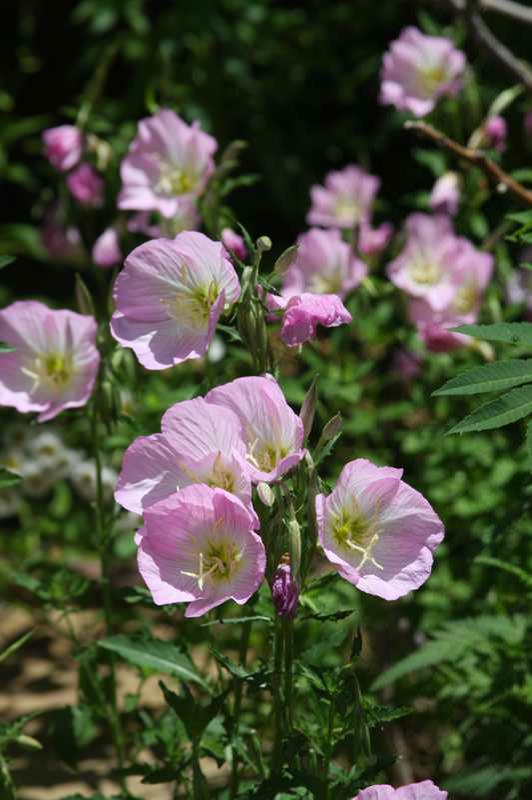White evening primrose (Oenothera speciosa)
White evening primrose
Oenothera speciosa, commonly called white evening primrose, features fragrant, bowl-shaped, four-petaled, white flowers (to 2-3” diameter) with yellow anthers that bloom from the upper leaf axils in spring (May-July). Flowers often mature to rosy pink as noted by this plant’s additional common names of pink evening primrose and pink ladies. This showy (showy evening primrose also works as a common name) but somewhat aggressive, spreading perennial was originally native to rocky prairies and plains from Missouri and Kansas south to Texas and Mexico, but it has over time naturalized into many other sites (e.g., fields, waste areas, roadsides and along railroads) from Illinois and Louisiana east to Pennsylvania and Florida. It grows to 10-24” tall on erect to sprawling stems, and spreads by rhizomes to 18” wide or more. Narrow, lanceolate to oblanceolate, medium green leaves (to 1-3” long) sometimes have small lobes near the leaf bases. Flowers open in the evening and remain open to late morning (all day if overcast). Flowers are followed by oval, ridged, seed capsules (to 2” long).
Genus name is unclear but may have come from the Greek words oinos and theras meaning wine-seeker in probable reference to an ancient use of the roots of genus plants in scenting wine.
Specific epithet is in reference to the large showy flowers.

Easily grown in average, dry to medium moisture, well-drained soils in full sun. Tolerates some afternoon part shade and drought. Also tolerates poor soils. Soils should have good drainage. Easily grown from seed sown outdoors in fall or early spring. Plants will spread, sometimes aggressively, by rhizomes and self-seeding to form large colonies.
| Hardiness zone | 4 - 9 |
| Sun light | Full sun |
| Water | Dry to medium |
| Maintenance | Low |
No serious insect or disease problems.
Perhaps best grown in areas where plants can spread without intruding on other plantings. Meadows. Wildflower gardens. Roadsides. Informal naturalized areas. Site carefully if planting in beds, borders or rock gardens.
| Common name | White evening primrose |
| Botanical name | Oenothera speciosa |
| Plant type | Herbaceous perennial |
| Family | Onagraceae |
| Hardiness zone | 4 - 9 |
| Water | Dry to medium |
| Maintenance | Low |
| Flower color | White maturing to rosy pink |
| Flowering period | May - July |
| Height | 0.75 to 2 ft. |
| Width | 1 - 1.50 feet |